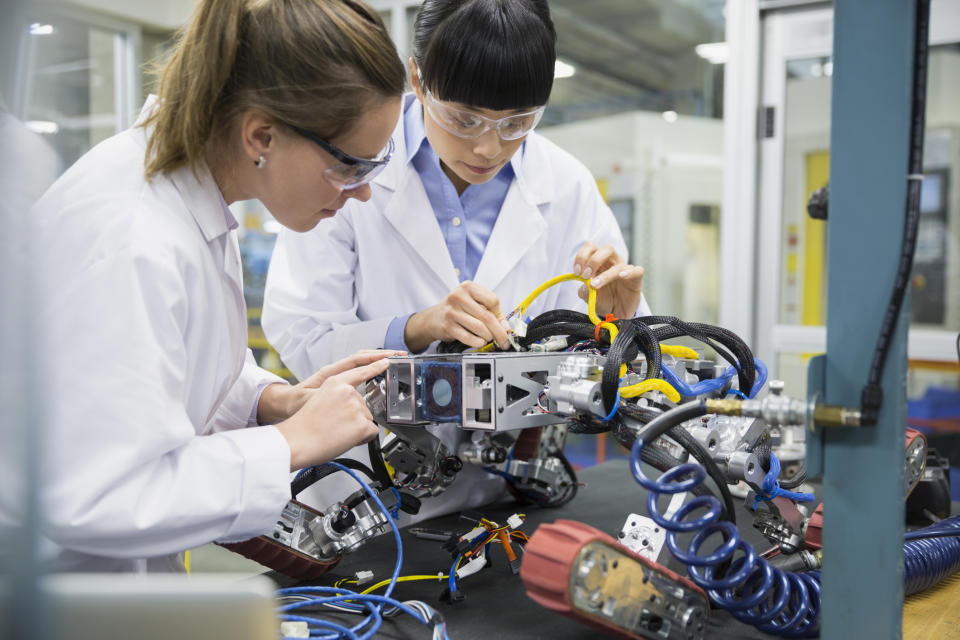The only industry where women get a $1,500 head start

It’s no news that the gender pay gap sees women worse off throughout their working life and well into retirement.
For most, the gap begins on the very first day of their first job after graduating.
But there’s one industry where female undergrads get paid more than their male counterparts: engineering.
Also read: Don’t let a robot replace you: 6 ways to upskill to stay relevant
The freshest figures by the Australian Bureau of Statistics show that female engineers starting out in their first full-time role earnt about $1,500 more than their male counterparts did in 2017.
“Only four of the nineteen fields of study, for which data are available, saw female undergraduates with a median starting salary higher or on par (a difference of $1,000 or less) with their male counterparts in 2017,” the ABS said.
Women engineers take home $65,000 a year while male engineers take home $63,500.
Communications was the only industry where women were paid exactly on par with men in their respective median starting salaries ($50,000).
In the field of medicine, men start on $71,000 whereas women are paid $1000 less at $70,000, and male social workers kick off their careers with $700 more a year than their female counterparts.
Bucking the trend: the engineering sector
The national president of engineering association Engineers Australia, Trish White, said the pay gap anomaly reflected the growing demand for female graduates in the sector.
“The problem-solving of modern engineering is very human-centric and so employers are looking to diversify their workforce, keen to recruit creative and communications skills as well as the technical,” White told Yahoo Finance.
Also read: Experts slam PM’s resistance to publishing pay gap data
“The difficulty is that only 13 per cent of working engineers in Australia are women, and the more experienced they are, the harder they are to find. So much so that we know of engineering companies that pay their staff ‘finders fees’ to bring in experienced women engineers for recruitment.
“It’s a great time for females to contemplate a career in engineering.”

University of New South Wales Dean of Engineering Mark Hoffman told Yahoo Finance that there had “definitely” been a deliberate push to encourage women into the engineering sector.
“The sector needs a higher proportion of women to be effective – in a very competitive recruitment market. The salary differential is driven by the current situation of poor diversity which needs to be redressed,” he said.
“When other professions who have a similar lack of gender diversity come to the same realisation, then one would expect that salaries for women will rise.”
What’s worked and what hasn’t
White and Hoffman both observed that mentoring programs, scholarships and sponsors worked well to encourage women into the sector.
The University of Queensland, the University of New South Wales and the University of Technology, Sydney had been particular stand-outs in this regard, Hoffman pointed out.
While there has been some “headway” being made in attracting students towards engineering, more efforts were needed to hook in female students at the high school level.
Also read: Labor tax plan could cut 9% off retiree savings
They often tended to gravitate towards science, where the employment opportunities were “relatively weak”, Hoffman said.
“School[s] need more information on the opportunities for engineering, where there is a significant national shortage in the workforce and very good employment opportunities.
“One of the challenges is that science graduates become science teachers and talk to students, but not engineering graduates!”
Effort to stay in touch with women engineers on maternity leave, such as inviting them to meetings, social events and sending company updates, have also helped cushion the transition in returning to work, White said.
She also encouraged firms to conduct pay gap audits.

 Yahoo Finance
Yahoo Finance 

